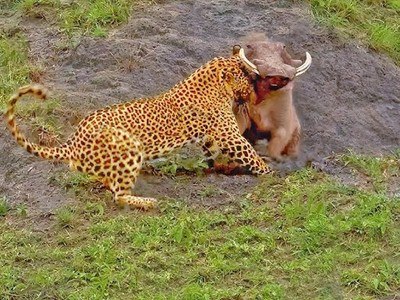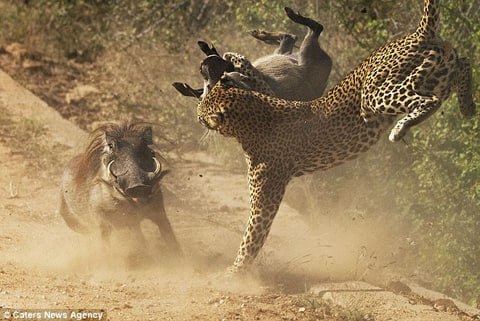
In a fascinating yet unsettling turn of events, a group of wild boars recently fell prey to a pack of tigers in a dense forested region of Southeast Asia. This rare and dramatic occurrence has captured the attention of wildlife enthusiasts and conservationists alike, shedding light on the complex predator-prey dynamics in some of the world’s most elusive ecosystems.

The Incident
The unusual incident took place in the heart of a protected wildlife sanctuary, where a large population of wild boars roams freely. While tigers are known to be apex predators in their habitat, their attacks on wild boars are relatively uncommon. Wild boars, with their sharp tusks and aggressive behavior, usually pose a formidable challenge to any predator that attempts to hunt them. However, in this instance, a pack of tigers appeared to have coordinated their attack, exploiting the vulnerability of a particular group of boars caught unaware.

According to local wildlife experts who investigated the site, the tigers launched a well-coordinated ambush at dusk, when visibility was low and the boars were less alert. Despite their initial resistance, the wild boars were overwhelmed by the sheer strength and strategic tactics of the tigers, who have been observed to hunt in groups on rare occasions.

The Role of Predators in Ecosystem Balance
Predators like tigers play an essential role in maintaining the balance of ecosystems. By keeping herbivore populations, such as wild boars, in check, they prevent overgrazing and ensure that vegetation remains healthy. This in turn supports the broader biodiversity of the region, as plant and animal life thrive in a balanced environment.

The attack on the wild boars is a reminder of how predator-prey relationships are ever-evolving. While tigers may not typically target boars as a primary food source, circumstances such as scarcity of other prey, the boars’ vulnerability due to injury or illness, or changes in the environment may prompt such rare events.

Human Impact and Conservation Efforts
This rare predator interaction also highlights the delicate nature of wildlife habitats in today’s changing world. Deforestation, climate change, and human encroachment into wildlife territories have forced many animals, including tigers and wild boars, to adapt to new, often challenging circumstances. In some areas, the natural prey for tigers is becoming scarce, leading them to seek alternative sources of food.

Conservationists are increasingly concerned about the future of both tigers and wild boars. Efforts to protect these species and their habitats are more critical than ever, as the very ecosystems they inhabit face growing pressures from human activity. Sustainable conservation programs are key to ensuring the continued survival of these majestic predators and their prey.

Conclusion
While the attack on the wild boars may have been a rare event, it serves as a stark reminder of the intricate and sometimes violent relationships that shape the animal kingdom. The dynamics between predators and prey are central to the health of ecosystems, and understanding these interactions is crucial for effective wildlife management and conservation.

As we look to the future, the need for protecting the natural habitats of both tigers and wild boars becomes more urgent, ensuring that these remarkable creatures can continue to play their vital roles in the wild for generations to come.



